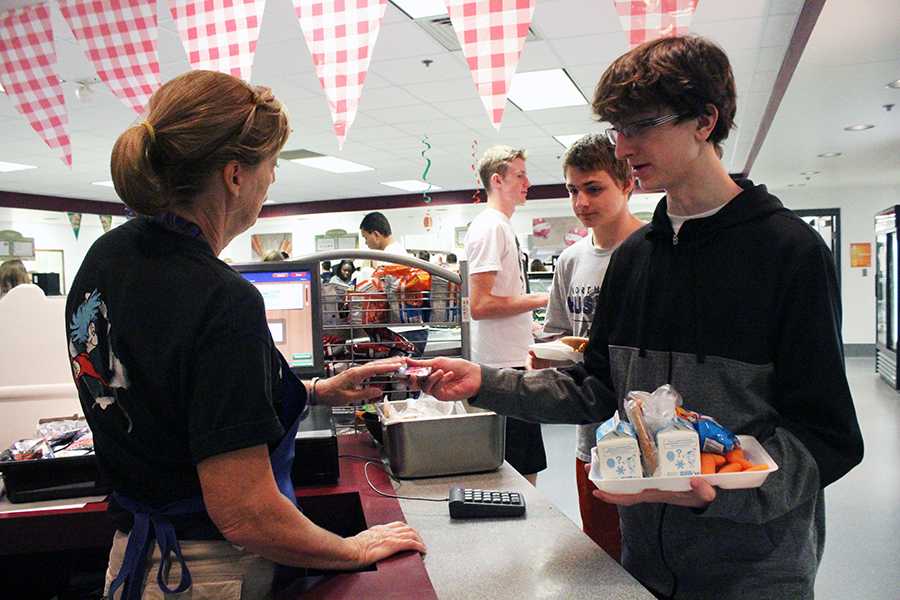New health guidelines restrict food sales
September 25, 2014
The U.S. Department of Agriculture (USDA) recently enacted new food guidelines that affect all food sold in public schools. These regulations are enforced by the Healthy, Hunger-Free Kids Act. This decision has impacted not only the cafeteria food at BVNW, but also the sales of the Dawg House.
“This year, a lot of the changes have to do with all the carb options,” Blue Valley School District dietitian Sarah Chellberg said. “The biggest change this year would be that everything would have to be whole-grain.”
As part of the new USDA regulation, the Smart Snacks in Schools standards have been introduced to provide healthier options for students. The Smart Snacks regulations state that food must be whole grain-rich, a first ingredient of a fruit, vegetable, dairy product or protein, or contain 10 percent of the Daily Value of one of the nutrients of public health concern in the 2010 Dietary Guidelines for Americans.
Because of the new food regulations, Chellberg said there is a higher chance that student will bring their own lunch instead of buying school lunch. However, the regulations are creating multiple options for students within the cafeteria.
“There are always about 12 to 16 entrée options, with the hope that we can capture as many students as possible, coming and joining us in the cafeteria,” Chellberg said. “The other thing we started this school year is premium lunch, so some of the favorite entrées can now be part of the meal.”
Chellberg said the District is having difficulties finding food companies and manufacturers that provide food that follow the new guidelines.
“Manufactures weren’t exactly prepared,” Chellberg said. “The country in general wasn’t exactly prepared for everything to be whole grain, to be the right portion size, to provide the right amount of calories, so it is difficult to find options.”
The same obstacles also apply to the Dawg House. Senior Lauren Stalcup, the food manager for Dawg House, said it is hard to face the challenge that a lot of the previous snacks no longer meet the regulations.
“We’re looking for vendors that sell healthy snacks,” Stalcup said. “That is the hardest part.”
Marketing teacher Kathy Peres said about 95 percent of the snacks students eat on a daily basis would be denied by the federal government. To accommodate the new regulations, the Dawg House has introduced homemade cookies and healthier lollipops containing 20 percent protein.
“The new Smart Snacks regulations outlaw everything that you would love to eat,” Peres said. “I mean, honestly.”
However, Peres said the Blue Valley School District has recently decided to reinforce a noncompete clause, which restricts any sort of competition between groups within an establishment, including schools. The Dawg House is now allowed to sell only before school and after the final lunch bell. Peres said this change will directly impact the Dawg House’s sales.
“The District trumps the government, so their policy trumps the federal government,” Peres said. “[But there is a] silver lining: at least we can still sell before and after school, but lunch was pretty lucrative.”
Although there are a lot of changes in the school regulations the Dawg House and the school cafeteria are making changes to create and sell healthy snacks that students would also enjoy. Peres said the Dawg House is coming up with creative strategies to adjust to the new sale time restrictions.
“I think [the nutritional changes have] been a challenge to implement, but I think we’ve been successful so far,” Chellberg said. “Everybody seems to be pretty accepting; now it just becomes the new normal.”







